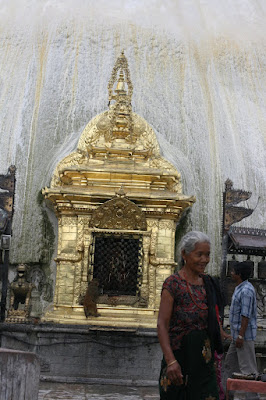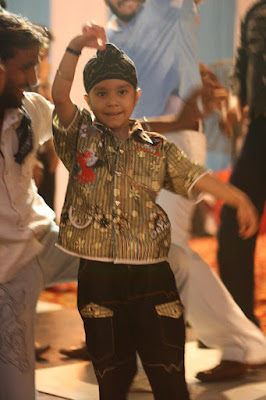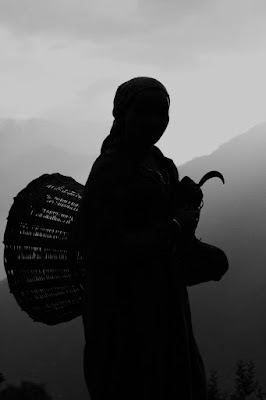One of the biggest reasons I haven't blogged in a while is that I haven't had power for long stretches of time. For almost three weeks, the power has gone out every night. Sometimes it goes at 11 p.m., sometimes midnight. Sometimes it goes out for an hour, and sometimes for 30 hours straight.
The reason for the outages?
It's hot, and people are using more power to try to stay cool. Monday, it's forecasted to hit 115 degrees, and, as the delayed monsoon approaches, humidity is climbing. I imagine that if you grew up with these conditions, you might be able to cope with it better. I'm not sure. I know that I complain a lot more than my Indian friends, although they do their share.
But the heat affects everyone. After weeks of unscheduled power outages,
people in my neighborhood, Dwarka, started rioting, charging the power stations and beating power company employees. My neighborhood was actually the hardest-hit by power outages.
I had only lived in the house for a couple of weeks, having spent some time up in the cooler mountains of Himachal Pradesh on a reporting trip, and hadn't had a chance to buy an air conditioner. In a way, I'm glad I didn't sink the money. I hadn't realized that some neighborhoods would lose power more frequently than others. In Pakistan, especially Islamabad, power outages are scheduled, so you might lose power one hour out of eight. That's easier to deal with, because you know it's coming, and when, and with a generator or an inverter you can keep fans going for that one hour.
But the past two weeks have been rough. Night before last, the power went out around 10 p.m., and I went out onto our fourth-floor balcony, as it was the coolest place in the house. It had been 'cool' that day, around 108-110 degrees, I think. A couple of minutes later, my flatmate, Mike, and his girlfriend and her friend also came out. Mike has an air conditioner, but that doesn't do much good without power. We must have sat out on the balcony for a couple of hours, sweating and reading marriage wanted ads (you really should check them out, if they're online -- some are hilarious) with the assistance of our LED headlamps.
The problem was, the power just never went back on (I hope I'm not running my days together here, there have been so many outages). I spent half the night lying on a beach towel spread on the floor of my bathroom, drizzling water onto my head from a spigot in the wall. Sometime in the morning, the power came back on, but the sun was up, and the temperature was, of course, climbing. It was Saturday, and I've been averaging 3-4 hours of sleep a night for weeks, and I was desperate. All I have is a couple of fans, so I tried something a fixer told me about in Pakistan: wrap a sheet around you, take a quick shower to soak it down, and then go to bed with it still soaked. It feels exactly as clammy as it sounds, but it does keep you cooler when you're under a fan. It's crazy how quickly the sheet dries out, though. In two hours I think I soaked it down three or four times. In this heat, you can get maybe 15 minutes of sleep at a stretch like that.
One of the most infuriating things about the situation is the response of the power companies. On Friday afternoon, the city hit its highest-ever peak hour for power demand -- 4,171 MW. There was load-shedding of well over 1,000 MW. So, I, not being an engineer, take that to mean that the damn power company's stations' capacity fell short by more than a quarter of what the people needed. Naomi, Mike's girlfriend's friend, said she'd read that the power company was blaming the differences between supply and demand on the fact that air conditioners are so readily available to the general public. If people weren't using them, the company said, there wouldn't be outages. That's like saying, "if people in the Sudan just quit eating food, then we could quit hearing about this whole 'famine' business." It's an outrage. There seems to be some sort of aversion to building or maintaining infrastructure in Delhi (I have so far only been to Delhi and Himachal Pradesh). Even the pricing structure is set in an attempt to reduce power usage, rather than just building the mechanism to give people what they need. In most other parts of the world, if you buy in bulk, you pay less. Here, you pay more per unit the more you buy. Ok, so for all the environmentalists out there, we're not talking about driving a Hummer around. We're talking about people trying to survive 115-degree heat. And some don't.
Anyway, I hope I'm not scaring away my friends from the States who were talking about visiting. As I mentioned, Dwarka was the hardest-hit out of all of Delhi, according to the Hindustan Times. And I doubt you see power outages like this in the cooler months. I am moving from the place in Dwarka, even though my landlord and his family are great, and I liked the space. Several neighborhoods just don't lose power nearly as often, and so I chose this place based on what I could research. Well, also, Saket happens to be the neighborhood of the only place I've found in Delhi where you can buy both beer AND beef hamburgers -- Bennigans.
For now, while I wait for this other apartment to become available on July 1, I've taken refuge in a hotel room, which is inordinately expensive, but one night's sleep was worth it. Oh, and just to finish my point about some neighborhoods not getting hit so hard: it's morning here, and the power didn't go out once last night.

















































